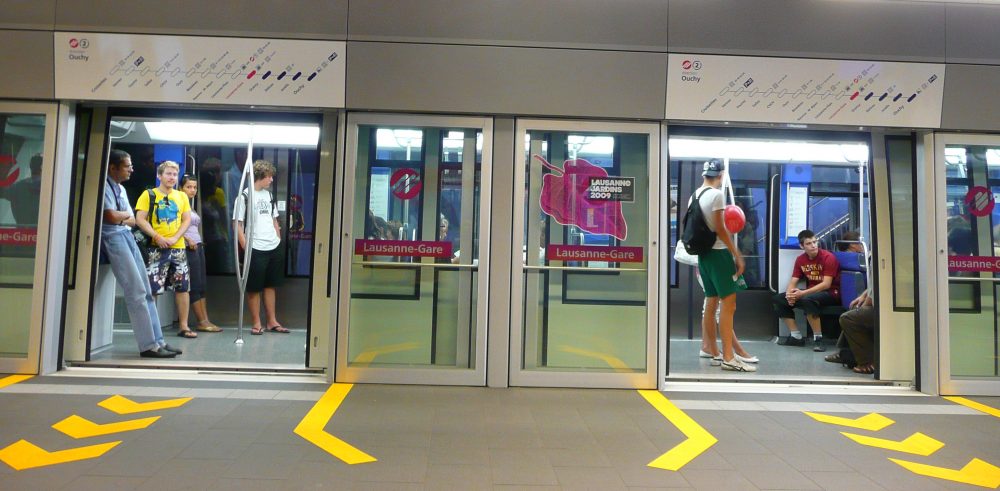Abstract
This paper investigates the role of English in Ouchy, one of the most touristic areas of Lausanne. This neighborhood is prized amongst locals and tourists alike, making it an interesting location to conduct a linguistic landscape research. Our study tries to answer the following research questions, 1) is English used more in signs intended for locals or for tourists?, and 2) how does English interact with French in multilingual signs? We found that English occupies a dominant position alongside French in signs targeted at both locals and tourists, sometimes in a complementary manner with French and sometimes as a translation of French. English was also used as a way of conveying style and modernity, as a branding factor and as a link between content and the language.
1. Introduction
Lausanne was named the Olympic Capital in 1994, and ever since then the city has marketed itself strongly with that name. As the home of the International Olympic Committee (IOC), over fifty international federations and international sports-related organizations, and the Olympic Museum, more than 1,200,000 tourists visit Lausanne each year (Lausanne tourism 2016). With this international appeal, we wanted to look at the use of English in signs located in Ouchy, one of the most touristic areas in Lausanne and where the Olympic Museum is located. English is commonly referred to as a global language and a lingua franca, especially within areas of business and tourism, as it is used as the language of communication between people of different mother tongues (Crystal 2003: 12). By means of linguistic landscaping, observing linguistic objects in the public space (Ben-Rafael, Shohamy and Barni 2010: xiv), we therefore want to see how the English language interacted with the official language, French, in various types of signs found in the touristic area of Switzerland’s fourth largest city. This paper will thus try to answer the following research questions: is English used in signs only intended for tourists, or is it used more in signs intended for the locals? And how is English used specifically in multilingual signs together with French? This paper will first introduce the concept of linguistic landscaping with special regards to the use of English in non-English speaking regions through previous research on the subject. In the following sections, we will provide information on our chosen area and detail our method for linguistic landscaping. Lastly, we will present our results and discuss them in connection to previous studies before offering a conclusion to our paper.
2. Theoretical framework
As put forth by Ross: “no one would disagree that English plays a major international role in the world today.” (1997: 29) Indeed, the presence of English in non-English speaking regions is far from being unusual, especially in big, multicultural cities and touristic areas. Linguistic landscaping, which is an emerging field of study, is an interesting way to observe the practice of multilingualism, the power relationship between languages or, as in this particular study, the use of English, as the choices of language are neither random or arbitrary (Bogatto and Hélot 2010: 275). The linguistic landscape is “the scene where the public space is symbolically constructed” (Ben-Rafael, Shohamy and Barni 2010: xi); it refers to the “linguistic objects that mark the public space (…) includ[ing] any written sign found outside private homes, from road signs to names of streets, shops and schools” (2010: xiv). But what is exactly the public space? It includes every space in the community or society that is exposed to the public eye (2010: xiv). Moreover, as highlighted by Bruyèl-Olmedo and Jean-Garau (2009: 386), the “public spaces in mass tourism destinations frequently turn into language melting pots.” This statement encouraged us to conduct our study in Ouchy, which is perhaps not a mass tourism destination, but which is definitely the most touristic area of Lausanne.
When conducting a linguistic landscape research of a city, it is important to keep in mind that, contrary to natural landscapes, it is entirely man-made. The signs can therefore deliver either top-down messages, which are “produced by the government, local councils or the owner of a building or site” (Mooney and Evans 2015: 87), or they can deliver bottom-up messages, which are produced by individuals or small groups (Mooney and Evans 2015: 87). For the purpose of our research, we adopted Mooney and Evans’ view, and considered the signs displayed by businesses to be top-down, assuming that the person who made the signs was the owner of the site, whereas other researchers, such as Ben-Rafael, Shohamy and Barni (2010) would consider those as bottom-up, being created by “individual, associative or corporative actors who enjoy autonomy of action within legal limits” (388).
Various studies (Selvi 2016; Bogatto and Hélot 2010; Bruyèl-Olmedo and Jean-Garau 2009) have observed the predominance of English in the linguistic landscapes of non-English countries, as “it enjoys a privileged position when it comes to addressing a multilingual, heterogeneous readership, becoming the de facto lingua franca” (Bruyèl-Olmedo and Jean-Garau 2009: 386). For the specific context of Switzerland, an officially multilingual country, English serves three functions: it can be a lingua franca between the different language groups, it can be a global international language of communication within the domestic business domain and it can be a hip and cool language within the private domain, especially amongst young people (Cheshire and Moser 1994: 435-436). Therefore, we were interested in investigating the use of English in Ouchy, where the three functions of English can be witness: it is a touristic area prized by both Swiss and foreigners, with various types of businesses, while also being a popular location amongst the residents of Lausanne.
3. Contextualization
Ouchy is a neighborhood in Lausanne, the main city of the canton of Vaud. Even though Lausanne is situated on the shore of Lake Geneva, it is only in Ouchy that you can actually find yourself on the lakeside. It makes it a very prized area, and according to the Office d’appui économique et statistique, Ouchy is one of the densest areas of Lausanne, with 8% of the total population living there: out of the 143,561 inhabitants of Lausanne, 10,499 people reside in this neighborhood. Moreover, 61,6% of the habitants are of Swiss nationality – which is more than in the rest of Lausanne, which counts 57% as Swiss. Finally, Ouchy is a well-off, upper-class neighborhood: the incomes of the inhabitants are higher than the average of Lausanne.
In the 19th century, Ouchy was only a small fishing-village around the castle. From 1857 to 1993, numerous improvements were made, such as the construction of the promenade, the inauguration of the Beau-Rivage Palace, highly prized by wealthy tourists, the creation of the first metro line, the construction of the docks as you can see them today, and finally the construction of la Place de la Navigation, the center of the neighborhood. Ouchy is a very touristic location in Lausanne, thanks to its beautiful scenery, the various cultural and sportive activities offered, and the many restaurants, bars and cafés. You can rent a pédalo, or visit the Olympic Museum, jog next to the lake or just lay in one of the parks, with an impressive view on the lake and the mountains. Ouchy also has a port, from where you can take a boat to France or just navigate on the beautiful lake. All of those elements create an area that is very popular amongst tourists, but also amongst the locals of every age. The place is family friendly, but also offers a great spot for young people. We were thus interesting in seeing how English enters the landscape of Ouchy, a place that is very attractive for tourists to visit but also popular amongst locals.
4. Methodology
On April 14 2018, Anna went to Ouchy to collect photos of the signs that were going to be used for this linguistic landscaping project. A total of 39 photos were taken of signs (all to some extent multilingual or monolingual in another language than the official French) seen along Avenue d’Ouchy, the main road leading down from the train station to the port, and of signs in close proximity to the lakeside and to the port itself. After this first collection, we together decided to focus on signs which included English to some degree, and thus we ended up with eighteen signs. However, due to the time and length constraints on this project, only ten signs were selected for a closer analysis. These ten signs were chosen due to their presentation of a variety of uses of English, from complete monolingualism to minimal use. Because of this, they show the interplay between English and the official language French, as well as other official and non-official languages in the area.
Before going out to collect the data, Anna had already spend quite some time in Ouchy and had already noticed a variety of languages in the area, which is why we chose this area for the project. In addition to the signs she had already noticed, she also expected to find even more multilingual signs once she started to actively look for them. She enjoyed the experience enormously, it was a very fun way to collect data while also being able to see and explore the neighborhood in a different way. She had no difficulties finding signs to photograph, the problem was rather related to choosing which signs to use in the end as we wish we could have used all of them.
5. Results
In order to conduct our linguistic landscape, we took a total of ten pictures in the area of Ouchy, represented by the purple pins (Illustration 1). Out of the ten observed signs, all of them contained English to some degree: four were monolingual English, three were bilingual English and French, two were multilingual English, French and German, while one sign was multilingual English, Thai and French (graph 1). Furthermore, the signs varied also in type: seven were commercial signs, two were infrastructural and one was regulatory (graph 2). All of the signs were however monologic, ie created by a singular producer, and were produced top-down from either the business-owners themselves or from the government and institutions.
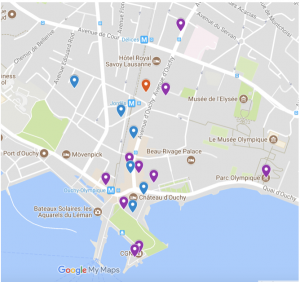
Illustration 1. Map of Ouchy, with the purple pins locating our ten signs.
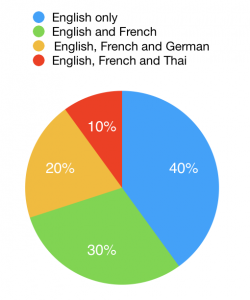
Graph 1. Distribution of languages in signs.
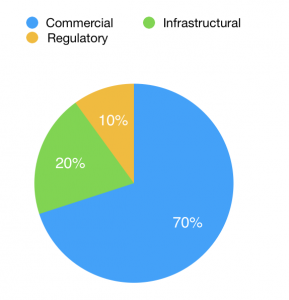
Chart 2. Distribution of sign types.
A breakdown of the largest group, the monolingual signs in English, shows that three of them were commercial and one was infrastructural. Furthermore, out of the four monolingual English signs, two of them were business names (“Blue Flowers” and “SPG Intercity,” see Appendix for photos) displayed at the storefront of these enterprises. The other two monolingual signs present English in a different way: Picture 1 has more content compared to the other ones, and the monument on Picture 2 appears as monolingual, but on the other side of it, the same information presented can also be found in French. Moreover, the information given on the monument in English does not require extensive knowledge of the language as other symbols, like the pictographs, the Olympic rings and the huge numbers, also help convey the message. On the other hand, in the sign about Lord Byron (picture 1), the language used is clearly linked to the content of the sign: it gives information about an English poet that wrote a book in this building, that is now the “Hotel d’Angleterre.” In addition, the information given in English by the sign markets the hotel as authentic, with high-standard and as having a significant cultural history.

Picture 1. Sign on the façade of Hotel d’Angleterre
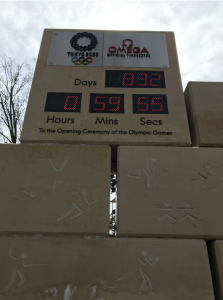
Picutre 2. Monument at Place de la Navigation
When looking at the bilingual signs, different situations can be observed. On Picture 3, French and English give the exact same information about the opening hours of the museum, except for the name of the museum which is only presented in French. The French text is placed first in a slightly bigger and thicker font, followed by the English translation. French is highlighted because the sign is located in an officially French-speaking area, thus showing its important and dominant status. Moreover, the name of the museum is presented only in French, but since it is accompanied by the Olympic symbol, which has a meaning stronger that words, the name does not require a translation. This sign clearly targets tourists from all around the world which is why English is used as a lingua franca to communicate with all possible visitors.
In comparison, Pictures 4 and 5 display English and French without a translation and the languages complement each other to create the message. In these two cases, the use of English appears random: it could be assumed it was used for practical reasons such as the lack of space (Picture 4) or letters (Picture 5). It can also be seen as an indication of openness and of knowledge of English among the employees of the restaurant, which could appeal to non-Francophone tourists.
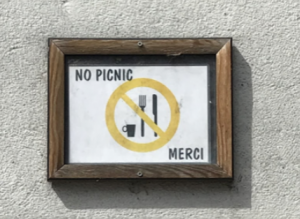
Picture 4. Regulatory sign at the restaurant/bar White Horse.
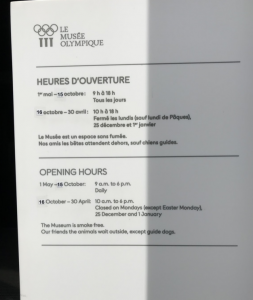
Picture 3. Sign outside the Olympic Museum.
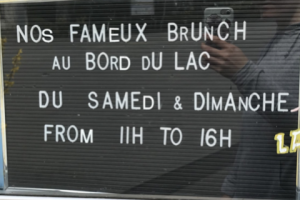
Picture 5. Sign outside the restaurant Le Lacustre.
One of the multilingual signs displayed a mix between French, English and Thai. Neither English nor Thai are official languages in this area, but in the case of Thai it shows a clear connection between the language and the content of the sign. The Thai restaurant has a French name Saveurs d’Ailleurs which is displayed in a large font at the top, followed by information in a smaller font given in French, English and Thai. The English word takeaway can be used in written French, but not as much in spoken discourse, and it could signal the restaurant’s coolness factor. The written Thai however, which translates to “Thai cuisine,” functions instead as a social identity marker for the Thai speaking community: the Thai language, the script and the meaning of the message might be directed towards the Thai community, to show that the restaurant serves authentic Thai food. For those outside the Thai community, the visibility of Thai also indicates authenticity of the restaurant and the food, even thought they might not understand the meaning of the text written in Thai script.
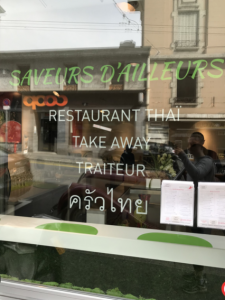
Picture 6. Window text of a Thai restaurant
In one of the two French-English-German signs (picture 7), the three languages are used in a confusing manner. The sign can be separated in two parts, which do not make the same use of the languages. On the left, French and English give information on the location of the self-service tickets machine. Whereas, on the right, the information is given in French, English and German to indicate the direction of the waiting room. However, the use of the three languages is not consistent on the right-hand side: porte is translated only into English, when salle d’attente is translated in both languages. One reason for the lack of translation of automate may be that the German word is very similar (Automat) and they decided to save space. This sign however shows a clear dominance of French, as it is always the top language and in a bigger font, even if the sign includes other languages. In comparison, similar signs from the main train station of Lausanne almost exclusively use French monolingually (see Appendix). The port of Ouchy, which displays three languages, highlights itself as more oriented towards tourists.

Picture 7. Infrastructural sign at the port of Ouchy
6. Discussion
As previous research has shown (Selvi 2016; Bogatto and Hélot 2010; Ross 1997; Bruyèl-Olmedo and Jean-Garau 2009), English is widely used in areas that are not English-speaking, and this was true for Ouchy as well. English was used in signs intended for both locals and foreigners, which answers the first part of our research question. The commercial signs, more specifically those with a business name in English, could be said to target more of the local crowd, as we believe that tourists do not usually buy real estate or flowers when on vacation. As put forth by Ross, “English is today seen as an attractive and fashionable language. An English name lends an aura of chic prestige to a business, suggesting that it is part of the international scene, following the latest trends, up-to-date with the newest ideas” (Ross 1997: 31), which could be the reason for why these local enterprises have chosen an English business name.
For the second part of our research question regarding multilingual signs, English was shown to be used in two different ways: either as a translation of the corresponding French text, or as a complement to the French text. Concerning the multilingual signs that used English to a lesser degree, English could add some style and coolness to the message. Furthermore, the multilingual signs that had an English translation of the French text seems to be more targeted towards tourists as they might not speak French, while the multilingual sign that mixed the languages could be more targeted towards locals. In the signs that were multilingual in French and English, or together with another third language, French was always the main language, except in the Chambers of Commerce-sign (see appendix), where German, English and French were presented equally. English was then always the second most visible language compared to the third language in our signs (German or Thai). This is interesting considering that German is an official language of Switzerland, whereas English is not. It shows that infrastructural signs, which give directions and information, are directed towards international tourists more than intra-national ones, who are however probably able to understand them.
The use of Thai, which is not an official language of the country, can be explain as a way of conveying a “sense of compatibility between the product they are selling and the language” (Selvi 2003: 34). The restaurant, which serves Thai-food, uses the language as a marker of authenticity to attract customers. Finally, as put forth by Bruyèl-Olmedo and Jean-Garau (2009), “English is used not because there is a predominance of English-speaking tourist, but because it is the language that most visitors share” (409), which is why English was the dominant foreign language in Ouchy, even more dominant that other official languages (for example Italian which was not observed) of Switzerland.
7. Conclusion
This study has several limitations, the major one being its small scale. Ten photos are not representative of the whole neighborhood, and as we consciously decided to focus on the English language either in monolingual signs or in multilingual signs, we ignored the French-only signs and those containing other languages. It could therefore had been interesting to know at what percentage English was used in signs compared to all other signs in the area, including the French ones. Furthermore, we only looked at signs that were produced top-down, as no bottom-down or transgressive signs were included in this study. It could thus be of interest for future research to see if and how English was used in Ouchy in those types of signs as well. Nonetheless, our study showed that English was used in a variety of different sign types, from infrastructural to commercial and regulatory, targeted towards tourists and locals alike. As put forth by Chesire and Moser, “it has been claimed that English belongs to any country that uses it. If this is so, we would expect the different countries that use English as a cultural symbol to exploit the linguistic resources in their own special ways, in order to meet their own individual requirements” (1994: 453), which is truly visible in Ouchy where the English language has infiltrated the public space in a variety of ways. While some of our multilingual signs used English to translate the French message, using English as a lingua franca, other signs incorporated English seamlessly into the message. Thus, even in our small-scale study we could nonetheless observe the multi-functionality of the English language in this otherwise Francophone neighborhood.
Bibliography
Ben-Rafael, E., E. Shohamy and M. Barni. 2010. Introduction: an approach to an ‘ordered
disorder’. In E. Ben-Rafael, E. Shohamy and M. Barni (eds.), Linguistic Landscape in the
City. Bristol: Multilingual Matters, XI-XXVIII.
Bogatto, F., C. Hélot. 2010. Linguistic landscape and language diversity in Strasbourg: the ‘quartier
gare’. In E. Ben-Rafael, E. Shohamy and M. Barni (eds.), Linguistic Landscape in the City.
Bristol: Multilingual Matters, 275-291.
Bruyèl-Olmedo, A., M. Jean-Garau. 2009. English as a lingua franca in the linguistic landscape of
the multilingual resort of S’Arenal in Mallorca. International Journal of Multilingualism,
6:4, pp. 386-411.
Cheshire, J., L.-M. Moser. 1994. English as a cultural symbol: the case of advertisements in French
speaking Switzerland. Journal of Multilingual and Multicultural Development 15.6, pp. 451-469.
Crystal, David. 2003. English as a global language. Cambridge: Cambridge University Press.
McArthur, T. 2000. Interanto: the global language of signs. English Today 61, 16:1, pp. 33-43
Mooney, A., B. Evans. 2015. Linguistic landscapes. In A. Mooney and B. Evans (eds.), Language,
Society and Power: an Introduction. London: Routledge, pp. 86-107.
Selvi, A.F. 2016. English as the language of marketspeak. English Today 128, 32:4, pp.33-39.
Ross, N. J. 1997. Signs of international English. English Today 50, 13:2, pp. 19-33.
Websites
Official website of the city of Lausanne. Available on: http://www.lausanne.ch/thematiques/nature-parcs-et-domaines/espaces-verts/parcs-et-promenades/les-sites-de-loisirs/ouchy.html . Accessed on the 11.05.18.
Official statistics of Ouchy, on the official website of Lausanne. Available on : https://www.lausanne.ch/officiel/statistique/quartiers/presentation-des-quartiers/06-sous-gare-ouchy.html . Accessed on the 14.05.18.
Lausanne tourism, rapport annuel 2016. Statistics on tourism in Lausanne. Available on: https://static.mycity.travel/manage/uploads/6/30/43463/42c2060ca07968eba50641670ec333fd760903ce.pdf Accessed on the 18.05.18.
Appendix
1. Pictures of the remaining three signs not discussed in detail in this paper.
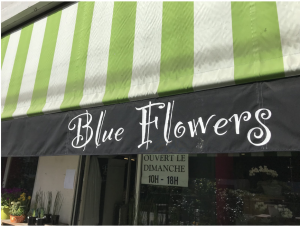
1.1 Name of a flower shop.
1.2. Name of a real-estate agency.
1.3. Sign on the Chamber of Commerce-building.
2. Pictures of signs taken at the train station in Lausanne, in comparison to our picture taken at the port of Ouchy.
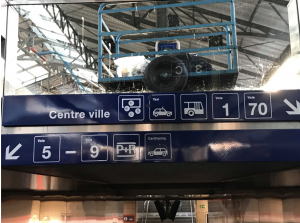
2.1 Sign on a platform in Lausanne train station
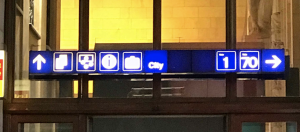
2.2 Sign at the train station
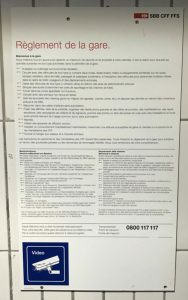
2.3. Sign on the wall of the train station
By Anna Ivarson and Camille Jaquinet
